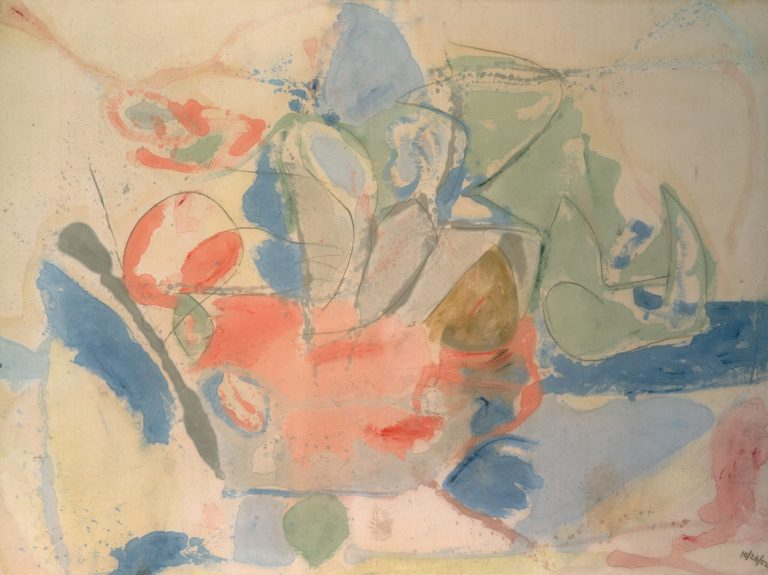Mountains and Sea (1952)
American painter Helen Frankenthaler was a significant female figure in the Abstract Art movement and one of the few artists to work through numerous generations of Abstract painters. Her works of abstract art changed frequently, displaying her evolving style at the time. Mountains and Sea, one of her most well-known abstract paintings, was created in 1952 when she was just 23 years old.
By thinning her oil paints with turpentine or kerosene before using them to stain the unprimed canvas, Frankenthaler's distinctive soak-stain method, for which she was lauded, was showcased in this piece of art. As a result, the paint was absorbed by the blank canvas, giving her artwork a sensation of continuous movement. Frankenthaler was motivated to establish her own unique approach in the artworks she produced after seeing some of Jackson Pollock's monochromatic drip paintings in 1951, which resulted in the development of soak-staining.
After visiting Nova Scotia, Frankenthaler was moved by the natural beauty to try out her new approach. Mountains and Sea included an almost transparent representation of abstracted objects that were supposed to be mountains, giving her work an elusive quality. Frankenthaler's paintings took on organic forms that suggested tremendous tranquillity thanks to her soak-stain process, and their heavenly and ephemeral quality was furthered by the use of a light and pastel color scheme.
Mountains and Sea is regarded as one of the earliest successful Color Field Paintings to exist inside Abstract Expressionism and has remained one of the movement's most alluring images to this day based on Frankenthaler's method. Numerous painters who experimented with the abstract art movement were influenced by Frankenthaler's famous works because of her light, flowing approach, which permitted a smooth transition away from the impasto trend that was prevalent at the time.
Mountains and Sea was the first abstract piece of Frankenthaler's career to be formally shown. Additionally, one of her largest paintings to date is included in her artwork. Mountains and Sea's enormous size allowed it to portray a peaceful closeness that Frankenthaler felt when visiting Nova Scotia, and the watery figures and shapes she painted were given a bright yet transparent look by the delicate pink, blue, and green hues she used.
Her images essentially floated off the canvas thanks to their scale and the colors she chose.
Artist: Helen Frankenthaler (1928 – 2011)
Date Painted: 1952
Medium: Oil and charcoal on canvas
Dimensions: 220 cm x 297.8 cm (87 in x 117.2 in)
Where It Is Currently Housed: National Gallery of Art, Washington D.C.











